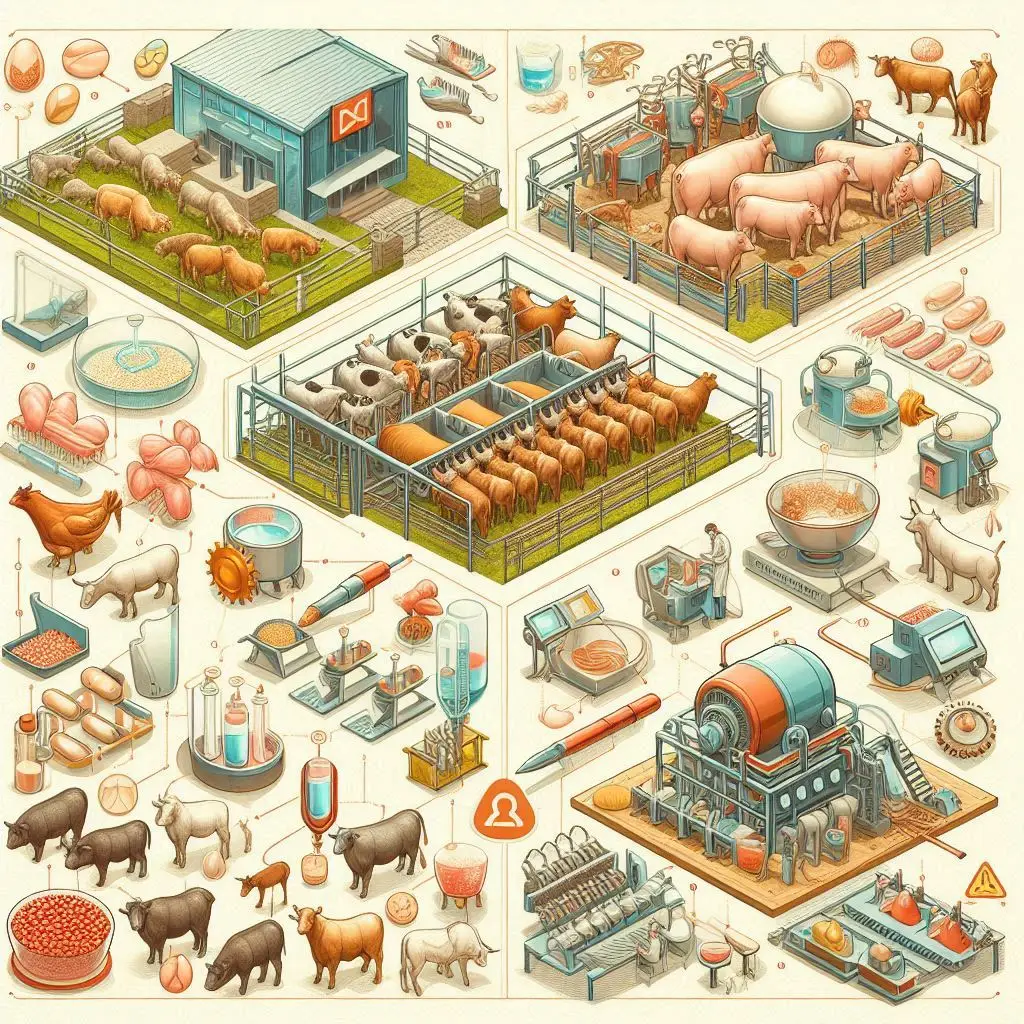Heritability Estimates in Animal Breeding

Introduction
Heritability estimates are essential tools in the field of animal breeding. They help breeders understand the genetic potential of various traits within livestock populations. This article explores the importance of heritability estimates, their applications, and how they influence breeding decisions.
What is Heritability?
Heritability is a measure that indicates how much of the variation in a trait can be attributed to genetic differences among individuals. It is expressed as a value between 0 and 1. A higher value suggests that genetics play a significant role in the trait’s expression.
Types of Heritability
- Narrow-Sense Heritability (h²):
- Focuses on additive genetic variance.
- Important for predicting response to selection.
- Broad-Sense Heritability (H²):
- Includes all genetic variance (additive, dominance, and epistatic).
- Useful for understanding overall genetic contribution.
Importance of Heritability Estimates
Understanding heritability is crucial for effective animal breeding. Here are some key reasons why:
1. Selection Efficiency
Breeders aim to select animals that will pass on desirable traits to their offspring. High heritability estimates indicate that selection based on phenotypic traits will be effective.
- High Heritability: Traits with values above 0.40 allow breeders to confidently select individuals based on observable characteristics.
- Low Heritability: For traits below 0.15, breeders may need alternative strategies like progeny testing or considering family performance.
2. Predicting Genetic Gain
Heritability estimates allow breeders to predict the potential improvements in traits over generations.
- For instance, if a trait has a heritability estimate of 30%, breeders can expect about 30% of the improvement in offspring due to genetic contributions from their parents.
3. Guiding Breeding Strategies
Breeders can tailor their approaches based on heritability estimates:
- Direct Selection: For high heritability traits, direct selection based on phenotype is effective.
- Crossbreeding or Management Practices: For low heritability traits, alternative methods may yield better results.
Factors Influencing Heritability Estimates
Heritability is not static; it can change based on environmental conditions and population dynamics.
Environmental Variance
Changes in environmental factors can affect how much variation is observed in traits:
- Reducing environmental variability can increase heritability estimates for certain traits.
- Conversely, increased environmental stress may lower heritability values.
Population Specificity
Heritability estimates are specific to populations:
- Different breeds or species may exhibit varying levels of heritability for the same trait.
- It’s essential for breeders to consider the specific context when applying heritability data.
Practical Applications of Heritability Estimates
Breeders utilize heritability estimates in various ways:
1. Developing Breeding Programs
Breeders design programs around specific goals, such as improving growth rates or disease resistance.
- Understanding which traits have higher heritabilities allows for more focused selection efforts.
2. Genetic Evaluation Tools
Modern technology provides tools for evaluating genetic potential:
- Tools like genomic selection use DNA markers to estimate breeding values more accurately.
- These tools often incorporate heritability estimates to refine predictions.
3. Enhancing Livestock Quality
By focusing on traits with high heritabilities, breeders can improve overall livestock quality and productivity.
- This leads to better meat quality, higher milk production, and improved reproductive performance.
Challenges in Using Heritability Estimates
Despite their usefulness, there are challenges associated with interpreting and applying heritability estimates:
1. Misinterpretation of Data
Breeders may misinterpret what heritability means:
- A high heritability does not guarantee that all offspring will express the trait similarly.
2. Overemphasis on Genetics
Focusing solely on genetics can overlook important environmental influences:
- A balanced approach considering both genetics and environment yields better outcomes.
Conclusion
Heritability estimates are vital for successful animal breeding programs. They guide breeders in making informed decisions about selection and breeding strategies. By understanding the genetic potential of traits, breeders can enhance livestock quality and productivity effectively.
More from Genetics and Animal Breeding:
Genetic Consequences of Inbreeding in Animals
Closed Nucleus Breeding System





Responses